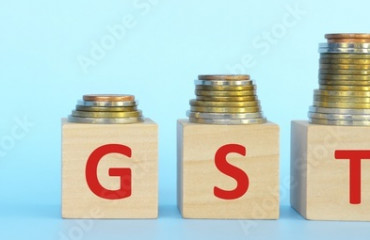
The smaller players are facing the third big impact in the last 10 years after the GST and pandemic; most of these sectors are self-employed and would need pandemic era-like sops, or else, they would simply disappear, adding to mounting unemployment, says Biswajit Dhar.
There is an urgent need for government assistance to labour-intensive sectors, which are going to be severely impacted as the 50% punitive Donald Trump-inspired tariff regime kicked in today, a leading trade economist said.
"The worst-hit sectors, like gems and jewellery, yarns, textiles and marine products, which could have a major impact in coastal states like Kerala, would need government assistance, particularly given the unemployment situation in the country," said Biswajit Dhar, a former professor at the Jawaharlal Nehru University (JNU).
"While the government has talked about cushioning the impact, it is important that it be done urgently and effectively, on the lines of the Production Linked Incentive, or PLI, which has been offered to the manufacturing sector in India,'' he said.
PLI was launched in 2020 to boost domestic manufacturing, attract investment, and enhance global competitiveness in strategic sectors by offering performance-based incentives on incremental production. The scheme provides financial incentives for manufacturing specified goods in India, aiming to create jobs, increase exports, and reduce import dependence.
Dhar said that the micro and small sector – as opposed to the larger micro, small & medium enterprises (MSME) – was facing the third big blow in the last 10 years. "After the GST, pandemic and now tariffs, this is the third big blow. Most of these sectors are self-employed and would need additional sops and last-mile financial assistance by the government, or else, they would simply disappear," he said.
Asked how the tariffs could impact unemployment, Dhar said that the figure would be hypothetical at this stage and needs to be watched. "I would say it is more a question of labour participation in the country, which could come down to 40-45% pandemic levels, from the mid-50's level that exists today," he said, adding that the word unemployment is not exactly appropriate in the situation, as many of these sectors are self-employed.
India's overall unemployment rate is showing a declining trend, with the Periodic Labour Force Survey (PLFS) reporting a figure of 3.2% in 2022-23 for the usual status of persons aged 15 and above.
However, the latest figures for May 2025 show a rise to 5.6%, driven by a sharp increase in youth unemployment, particularly in rural and urban areas, and higher rates for women compared to men. Key causes include skills mismatch between education and job market demands, and a reversal of the positive shift from agriculture to manufacturing and construction that had previously absorbed rural labour.
Dhar also did not rule out the impact of tariffs on the pharmaceutical and mobile phone industries. The US pharmaceutical industry leverages the Indian pharma sector for cost-effective production, particularly of generic drugs, which significantly benefits the US healthcare system through lower drug prices and increased access. Indian companies, in turn, find a large and lucrative market in the US, especially for generic medications. This balance could be disturbed, he said.
Likewise, the tariffs may also impact its smartphone industry. For the first time, India has overtaken China as the No. 1 exporter of smartphones in the US, following Apple's tariff-driven manufacturing pivot to New Delhi.
India-made devices accounted for 44% of smartphone imports in the US during the second quarter, up sharply from 13% during the same period last year, according to a recent report published by research firm Canalys. The total volume of smartphones made in India jumped 240% year-over-year, Canalys wrote.
"I also find it hard to believe that NRIs would not buy gems and jewellery in the US," Dhar noted. Gems and jewellery accounted for $10 billion worth of Indian exports to the US in 2024-25.
The US accounts for 20% of merchandise exports from India and 2% of the GDP. The sky-high tariffs mean that goods exporters would be rendered uncompetitive in the US market, which is among the handful of trading partners with whom India has a net goods trade surplus. India runs a sharp trade deficit with China, Russia and the UAE, its other top trading partners.
